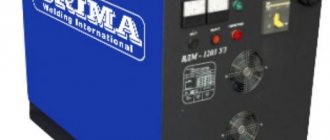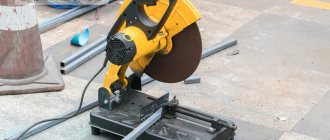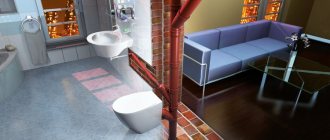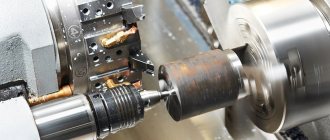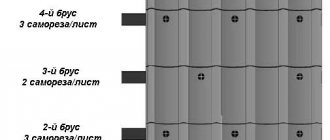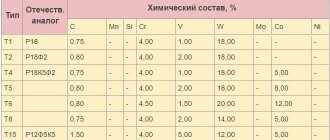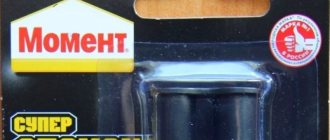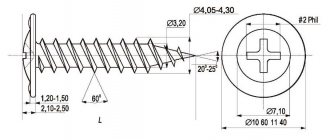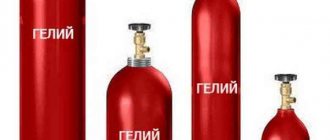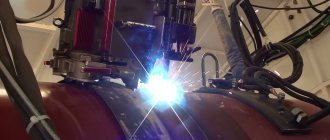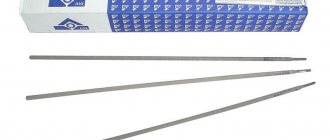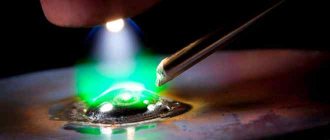Conductive varnish composition
The electrically conductive varnish base includes special fine-grained elements; after the drying stage is completed, they become a film-like coating through which electricity passes well.
So, after their use, the level of electrical conductivity returns within an hour; full restoration of the level occurs in about 10 hours. Sometimes, in order to achieve a better effect, re-processing is carried out.
Varnishes are applied to small areas; for this reason, the compositions are produced in small containers.
After their use, the level of electrical conductivity returns within an hour; full restoration of the level occurs in approximately 10 hours.
Features and properties of conductive adhesives
To obtain the desired layer, high-quality conductive varnishes are made using graphite, nickel powder, polymers, and powdered silver.
An elastic composition with low resistivity is needed. Thanks to its elastic property, it will be possible to easily apply a layer pointwise, without fear that the product will get onto unnecessary areas. To do this, it is necessary to correctly distribute the amount of conductive substances with polymer binders.
Excessive addition of electrically conductive substances will result in poor adhesion to the substrate. The reliability of contacts will be questionable.
Graphite varnish must also be quick-drying, environmentally friendly and withstand high temperatures.
Thanks to its elastic property, it will be possible to easily apply a layer pointwise, without fear that the product will get onto unnecessary areas.
Features and requirements
Having such a wide range of applications, electrically conductive adhesive must have certain characteristics in order to efficiently perform the tasks assigned to it.
First of all, it must provide sufficient current conductivity. That is why it is customary to use ordinary graphite, nickel, gold, polymers, silver and other powdered metal that conducts current well as one of the components.
The second component is the adhesive base. It should have a minimum resistivity and have good elasticity so as not to spread during application. Here it is very important to maintain a certain ratio between the polymer binder and the conductive powder material. Thus, exceeding the content of current-conducting elements in the composition may lead to a decrease in adhesion, which reduces the reliability of contact.
Another requirement for glue quality is the drying speed. The faster this happens, the more convenient and faster the master can work.
And, of course, the conductive composition must be heat-resistant and safe, since many semiconductors and microcircuits heat up during operation.
Requirements
Of course, the main parameter for such products is the quality of current conduction; to obtain the effect, small metallic substances are used in the composition. The most popular is the use of nickel powder; particles of gold or other precious metals can also be selected.
The next necessary criterion is having a low resistivity. The presence of a large number of electrically conductive elements leads to a decrease in adhesive properties.
To reduce the loss of adhesion during use of the item, varnishes are endowed with low thermal resistance. The products require high-quality gluing and the creation of a protective layer, so a high level of elasticity and strength is required, achieved through polymer binders.
The layer should not be very liquid, otherwise parts of the device will be damaged if drops fall on an unnecessary area during repairs.
To reduce the loss of adhesion during use of the item, varnishes are endowed with low thermal resistance.
Advantages and disadvantages
These products are used for a variety of electronics parts. They are distinguished by a number of positive properties that distinguish them among varnish products:
- High level of adhesion, adheres well to porous, smooth substrates;
- Usually a convenient applicator is installed on the container, which allows you to apply a layer evenly and in the desired size;
- Suitable for gluing parts that during operation will heat up no more than 1800 degrees;
- Withstands long-term heating without changing characteristics;
- Long lasting result;
- Sealing property;
- Quick drying;
- Withstand temperature changes.
The downside is the relatively high cost, but it is possible to make the varnish yourself.
Suitable for gluing parts that during operation will heat up no more than 1800 degrees.
Application area
The use of varnish is most often associated with the inability to use a soldering iron. There are parts that are simply too small or may be damaged by the device. Its use in electroplating is known; it is convenient to apply varnish when working with electroplating. Other areas of varnish use:
- Gluing heating filaments to the glass of a car;
- Gluing piezoceramic plates;
- For fastening 2 dielectrics when working with communications;
- For connecting wires with a small cross-section;
- Glues damaged tracks of remote controls, keyboards and others;
- Helps to glue crystals and microcircuits to the board in various computer equipment;
- Helps restore conductivity in old damaged parts;
- For work with the installation of “warm floors”.
The use of varnish is most often associated with the inability to use a soldering iron.
Obtaining silver powder for the production of conductive glue
silver powder is required to make a conductive adhesive . Next we will talk about how you can get it at home with your own hands.
To begin with, it is worth listing the components that will need to be used in the process of obtaining powdered silver:
- silver;
- nitric acid;
- ammonia (5% solution);
- soda;
- formalin (solution 1%).
First you need to dissolve silver in nitric acid. The output is silver nitrate. It is worth noting the fact that working with nitric acid requires caution and accuracy , since careless actions with this substance can result in serious burns.
Then, you will need to add soda to the resulting solution. This must be done gradually to neutralize . Next, the silver nitrate solution will need to be combined with a formaldehyde solution, and then heated to 80 degrees. In this case, the resulting substance will need to be stirred constantly. This is required to deposit silver.
After heating, drop a few drops of pre-prepared ammonia . As a result of these manipulations, a dark precipitate is formed. It will need to be washed with distilled water and then dried. The drying temperature should be approximately 110 degrees.
Review of popular brands of varnishes
Graphite varnishes are on sale in large quantities; there are Russian brands that produce high-quality varnishes, and foreign products. Among the Russian products, Kontaktol stands out, which, according to the manufacturer, includes silver powder. It is popularly used to repair the heated glass system in cars.
It is popularly used to repair the heated glass system in cars.
Also with an epoxy base, characterized by a high level of adhesion to different substrates.
Characterized by a high level of adhesion to different substrates.
The popular foreign product “Done Deal” creates a good result, but the cost is higher than other products.
It creates a good result, but the cost is higher than other means.
If you need to restore electrical conductivity on the buttons of a remote control or other devices, then professionals recommend Elast conductive varnish.
Professionals recommend conductive varnish Elast.
DIY conductive agent
Craftsmen offer several recipes for mixing such a solution at home. The main components of the mixture are graphite and silver powder, the difference being solvents and binders. Prepared according to one of the following recipes, varnish (glue) will help solve everyday problems with the electrical conductivity of devices.
Recipe No. 1
- fine-grained graphite powder – 15 g;
- silver powder – 30 g;
- vinyl chloride-vinyl acetate copolymer – 30 g;
- pure acetone – 32 g.
Combine all components in a mortar and mix thoroughly until a syrupy liquid of a gray-black hue forms. Pour into a glass container with a tight-fitting lid. Be sure to shake (mix) before use. If you use a little less solvent, you can increase the viscosity of the substance. The drying period for the solution after application is at least a quarter of an hour.
Recipe No. 2
- powdered graphite – 6 g;
- silver powder – 60 g.
Two options are offered as binders:
- Nitrocellulose – 4 g; rosin – 2.5 g; ethyl acetate (acetone) – 30 g.
- Natural shellac – 3 g; ethyl alcohol denatured alcohol – 31 g.
First, mix the powders in a mortar, then add binders. Bring everything to a homogeneous paste-like consistency. Transfer to a storage container. Before use, stir thoroughly; if you need to reduce the viscosity, use a solvent.
Recipe No. 3
Depending on the mechanical loads of the electrically conductive connections, you can use various available means. For example, extract graphite from any AA battery and mix it with tsaponlak. True, this product has weak adhesion to rubber, so it is better not to apply it to the keys of the control panel. But to restore the graphite tracks on the consoles - please.
Recipe No. 4
You can quickly make a graphite conductive solution from scrap materials like this. True, it won’t be exactly a varnish, but the mixture will gain conductive properties. Buy the most common superglue and simple 2M or 4M pencils. Using a file, sharpen the pencil lead to a volume equal to the volume of the glue tube.
We carefully unfold the untouched tube of glue from the side where the housing is soldered. Add slate powder and mix thoroughly with a toothpick until smooth.
We “pack” the tube back. In the future, we use the product, as usual, superglue (through a hole with a nozzle).
If your knowledge of electronics is small, and you had problems with chemistry at school, do not rush to prove yourself in repairing household appliances. It is better to take it to a workshop, where a specialist will find out the reasons for the breakdown. This will include checking and, if necessary, correcting the electrical conductivity of the contacts.
Good day, site experts!
I recently asked myself this question: is it possible to make homemade conductive glue? I use such things quite often, but we don’t have a store with a normal range of electrical goods in our village, and I have to often travel to the city, which is not always convenient. In general, I want to learn home production technology.
Read also: Carburetor partner 350 adjustment
Thank you in advance! Best regards, Dmitry!
How to make your own varnish
It is not so difficult to make graphite varnish with your own hands, and the result will be no less quality when compared with using finished products from the store. You will need graphite, silver, an adhesive and a couple of other fillers, depending on the chosen recipe for preparing the composition:
- 15 grams of fine graphite powder, 30 grams of silver powder, 30 grams of vinyl chloride-vinyl acetate, 32 grams of acetone are mixed together. A syrupy consistency is required;
- 4 grams of nitrocellulose, 2.5 grams of rosin, 30 grams of ethyl acetate, 3 grams of shellac, 31 grams of ethyl denatured alcohol. Mixing begins with powders, then other ingredients are added to the total mass;
- Taking into account the task at hand, different levels of current conductivity can be obtained. Graphite may be obtained from batteries; the resulting graphite will need to be mixed with tsaponlak. This option is not suitable for rubber parts due to poor adhesion to rubber;
- You can get a varnish-like substance by mixing super glue with 2m or 4m pencils. The pencil lead must be sharpened to the same extent as the glue. Graphite is mixed with glue, the resulting mass will be electrically conductive.
Before applying the homemade mixture, be sure to mix it well again. The viscosity level of homemade products can be adjusted to the desired level by adding solvents.
It is not so difficult to make graphite varnish with your own hands, and the result will be no less quality when compared with using finished products from the store.
Conductive varnishes can be used on various electronic products; they are used to glue together parts of screens, buttons, etc. If you don’t have such a product at hand, you can prepare the mixture yourself; the quality of the coating will be high. Although using ready-made varnishes is always more convenient.
Making your own glue
Due to the fact that industrial compounds have a high price, and sometimes you need a lot of glue, such as to repair car glass, a completely logical question arises about the possibility of making conductive glue with your own hands. It turns out that it is possible. And at the same time, different composition. Several recipes most used by radio amateurs:
- Perhaps the most common way to create glue yourself. Here the main focus is on the main feature of such compositions - electrical conductivity. To do this, buy the simplest and most affordable “Superglue”, sold almost everywhere. Now you need to grind the lead from an ordinary pencil into a fine powder. This is not as easy to do as it might seem, but it is quite possible. It’s good if you have an old and unnecessary blender. It will help a lot with this problem. Now the resulting graphite dust must be mixed with superglue in a 1:1 ratio. All is ready!
- This recipe will come in handy if you need to obtain the ideal adhesive for its electrical conductivity and at the same time good adhesion. Here, as in the previous case, you will need fine graphite powder in the amount of 15 grams. You also need vinyl chloride-vinyl acetate, a terpolymer in powder form, in an amount of 30 grams. Powdered silver - 35 g. And pure acetone with a volume of 35 ml. All ingredients are thoroughly mixed in a glass or porcelain bowl. In this case, the solution should look like a black-gray syrup. The viscosity of the glue can be adjusted by the amount of acetone. The resulting consistency must be poured into a glass jar with a well-ground stopper. Before use, stir with a glass or metal rod. The resulting adhesive has excellent electrical conductivity and reliable adhesion. Well suited for repairing heating strips on glass, as well as where contact strength is required.
- Another interesting recipe, but with the inclusion of silver. So, you need to mix 6 grams of graphite and 65 grams of powdered silver. Now add the binder: nitrocellulose and rosin, 4 and 3 grams, respectively. We also add ethyl acetate and acetone, 25 g. This mixture must be moved carefully until it becomes homogeneous. After some time, the resulting glue will begin to thicken, so acetone is added at the time of use, which will give the desired viscosity. It is believed that this glue is simply an ideal solution for car repair work, but it is not suitable for external use.
- And in this recipe we need cenoplak (a transparent solution of nitrocellulose in an organic solvent) and a regular graphite rod from a battery. Next, by analogy, we grind the graphite and mix it with cenoplak until it forms a gel. This glue can be used as a conductive glue for cables in car repairs, and to eliminate problems with small household appliances.
As you can see, it’s not that difficult to make conductive glue yourself. The main thing here is the availability of all the necessary ingredients. It’s also a good idea to know that all of the above types of glue must be stored in a glass container with a tightly sealed lid.
